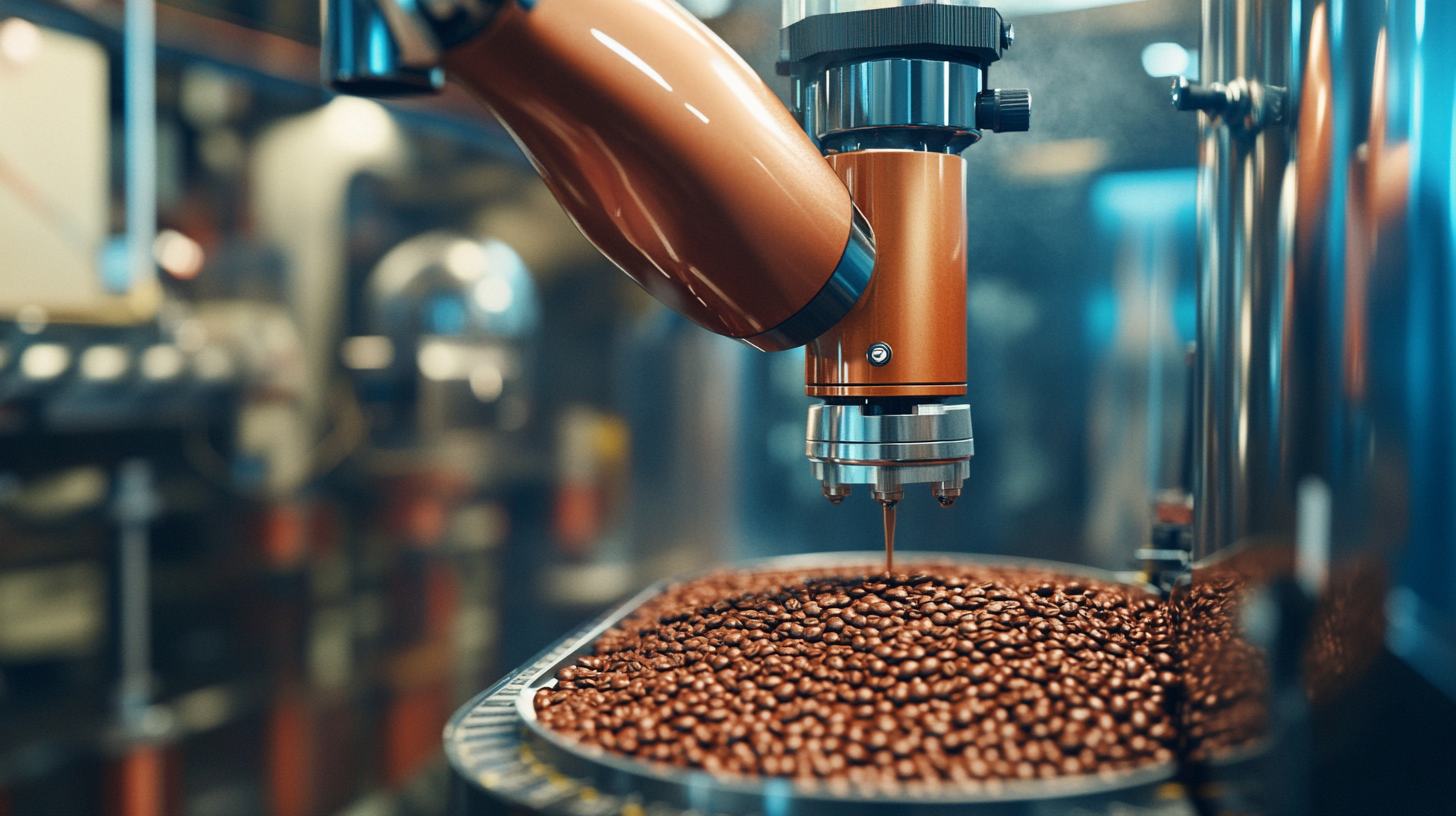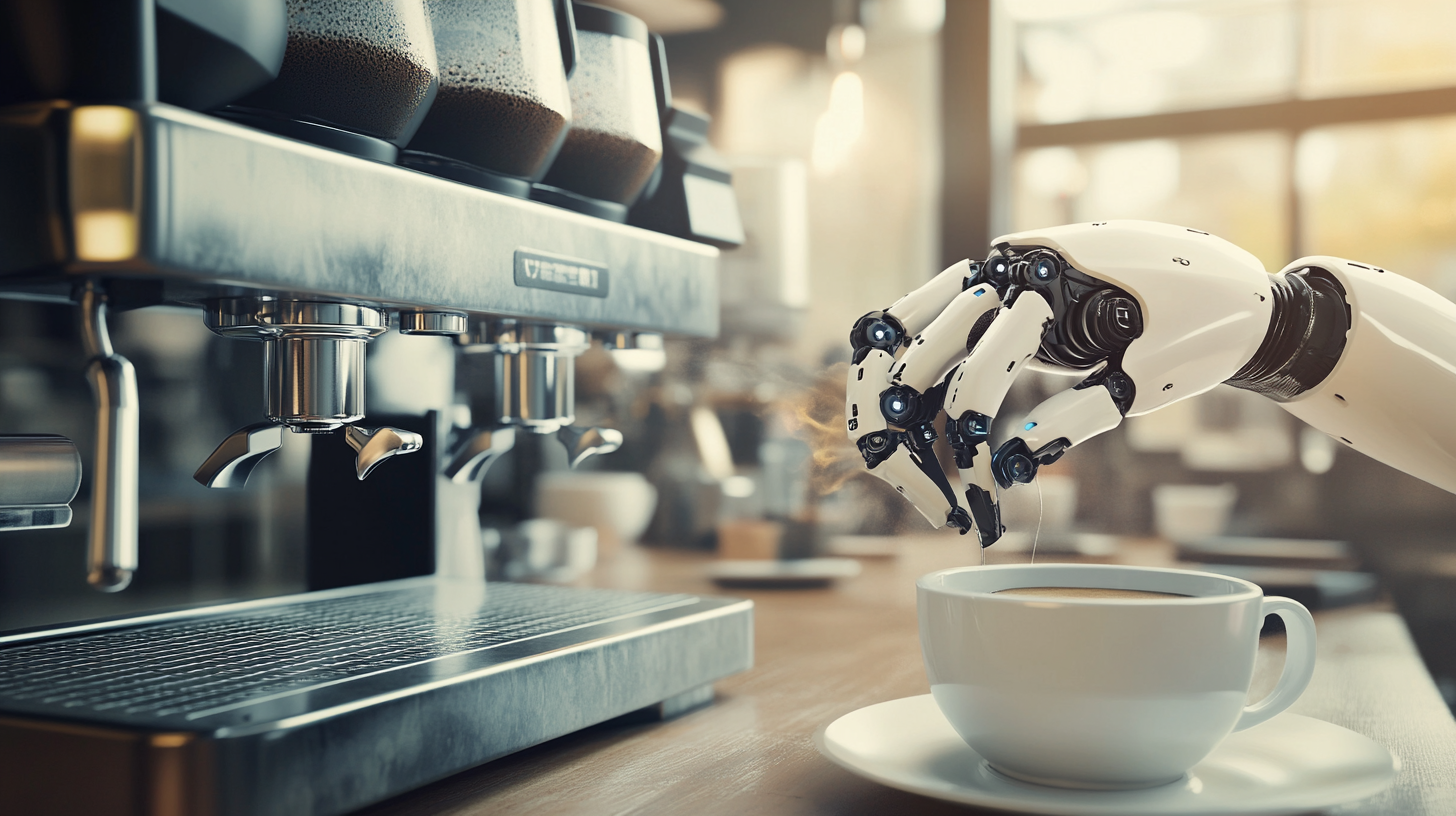Navigating Trade Tariffs The Rise of Chinese Manufacturing and the Best Coffee Bot
In the current global economic landscape, the imposition of trade tariffs has significantly impacted various industries, yet Chinese manufacturing continues to defy expectations with remarkable growth. According to a recent report by the World Trade Organization, China's manufacturing output surged by 6.3% last year, even as tensions between the U.S. and China led to reciprocal tariff hikes. This resilience is partly attributed to innovations in automation and technology, such as the rise of the Coffee Bot—a sophisticated machine that not only brews coffee but optimizes operational efficiencies in cafés and restaurants. As demand for quality coffee experiences an upward trajectory, with the Specialty Coffee Association reporting a 20% increase in specialty coffee consumption, the integration of such advanced technologies reflects a pivotal shift. This blog explores how Chinese manufacturing, through strategic adaptation and technological advancement exemplified by the Coffee Bot, is navigating the complexities of international trade while positioning itself for sustained success.

The Impact of Trade Tariffs on Chinese Manufacturing Growth
Trade tariffs have become a significant factor influencing the landscape of global manufacturing, particularly in China. As countries impose tariffs to protect their domestic industries, Chinese manufacturers face both challenges and opportunities. The rising costs of imported materials due to tariffs can strain profit margins for those relying heavily on global supply chains. However, this scenario also spurs innovation and encourages manufacturers to adapt by enhancing their production processes and exploring local sourcing options.
Moreover, the impact of trade tariffs has led to a strategic shift in China's manufacturing sector towards higher value-added products. Companies are investing more in technology and automation to stay competitive in a tighter market. The emphasis on quality over quantity not only helps in mitigating the adverse effects of tariffs but also positions Chinese manufacturers favorably in international markets where demand for specialized products continues to grow. As the global economic environment evolves, the resilience of Chinese manufacturing will largely depend on how well these businesses navigate the intricate landscape of trade tariffs.

Resilience of Chinese Manufacturers in the Face of Tariff Challenges
The resilience of Chinese manufacturers in the face of tariff challenges has been a noteworthy topic in global trade discussions. Despite the imposition of tariffs, data from the World Trade Organization indicates that China's manufacturing sector has adapted remarkably, maintaining a growth rate of approximately 5.2% in 2023. This adaptability can be attributed to innovations in production processes and strategic shifts towards automation, which enhance efficiency and reduce costs, allowing manufacturers to remain competitive.
Moreover, an industry report by McKinsey & Company highlights that Chinese manufacturers have increasingly invested in technology to improve their product offerings. In 2022, over 60% of surveyed manufacturers reported integrating advanced technologies like AI and machine learning into their operations. This shift not only helps in mitigating the impacts of tariffs but also positions them to meet the evolving demands of global markets. As a result, Chinese manufacturers continue to thrive, illustrating their remarkable capacity to navigate through trade challenges and maintain their dominant position on the world stage.

The Role of Innovation in China's Manufacturing Sector
Innovation has become a driving force in China's manufacturing sector, enabling the country to transform from a low-cost production hub to a leader in advanced manufacturing. With investments in research and development surging, Chinese companies are increasingly adopting cutting-edge technologies such as artificial intelligence, robotics, and the Internet of Things. This technological leap not only enhances efficiency but also improves product quality, allowing Chinese manufacturers to compete globally in high-value markets.
Moreover, the government plays a crucial role in fostering innovation by establishing favorable policies and support mechanisms. Initiatives like "Made in China 2025" aim to boost domestic capabilities in industries such as aerospace, electric vehicles, and biotechnology, further solidifying China's position on the global stage. As the manufacturing landscape evolves, the emphasis on sustainable practices and eco-friendly products is also becoming prevalent, with innovative approaches leading the charge towards greener production processes. This combination of technological advancement and strong policy support sets the foundation for a robust future, showcasing the dynamic nature of China's manufacturing prowess.
Examining Consumer Preferences: The Best Coffee Bot in the Market
In recent years, the global market for coffee machines has seen a significant surge in consumer interest, particularly in the segment of automated coffee bots. According to a report by Market Research Future, the global coffee machine market is projected to reach approximately $34 billion by 2025, growing at a compound annual growth rate (CAGR) of around 4.5%. This growth is largely fueled by the increasing demand for convenience and the evolving preferences of coffee enthusiasts. Home-baristas are increasingly turning to technology to enhance their brewing experience, with smart coffee bots offering innovative features like app connectivity, customization options, and even integrated grinders.
Moreover, consumer preferences have shifted dramatically towards machines that provide versatility and ease of use. A survey conducted by the Specialty Coffee Association found that 72% of coffee drinkers prefer machines that allow them to control brew strength and temperature. This inclination towards personalization is exemplified by products like the Breville BES870XL Barista Express, which has gained popularity for its semi-automatic capabilities that cater to both novices and expert users alike. As manufacturers, including those from China, adapt to these changing trends, it’s evident that blending technology with traditional brewing methods will be essential in capturing the modern consumer’s attention.
Strategies for Navigating Tariffs in Global Supply Chains
Trade tariffs have become a significant factor in global supply chains, especially with the rise of Chinese manufacturing. Companies must develop innovative strategies to navigate these challenges effectively. First and foremost, diversifying supply sources is crucial. By not relying solely on one country, businesses can mitigate risks associated with tariffs. Developing relationships with suppliers in different regions can help ensure stability and reduce potential disruptions in the supply chain.
Another strategy involves investing in local production. Establishing manufacturing facilities closer to key markets can help companies avoid punitive tariffs and shipping costs. This approach not only shortens supply chains but also enhances responsiveness to market demands. Additionally, businesses should remain informed about tariff regulations and engage in proactive negotiations with governments to advocate for favorable trade agreements. By staying ahead of changes in trade policies, companies can better position themselves to maintain competitiveness in a rapidly evolving global landscape.
